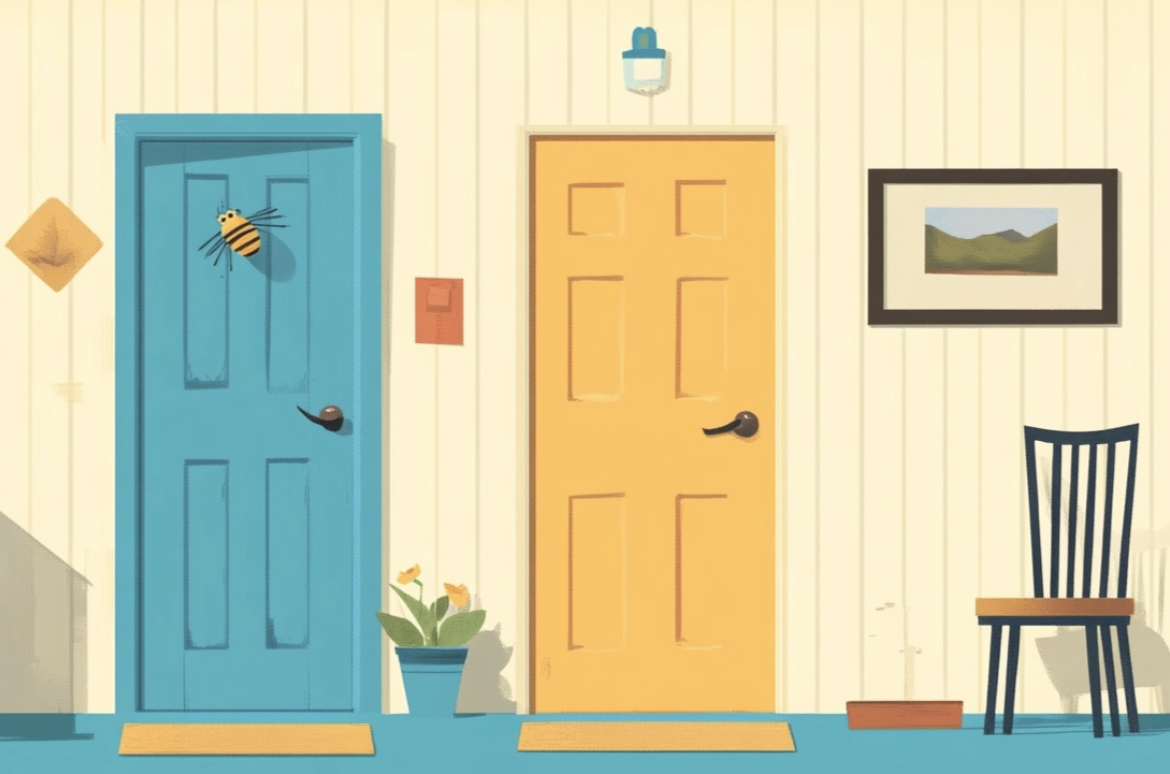
Finding a bee in your house can be a surprising and slightly worrying experience.
While bees are not naturally aggressive, removing them safely is important to avoid potential stings and help the bee return to its natural habitat.
The good news is, with a few simple steps, you can calmly guide the bee out without harming yourself or the insect.
In this guide, we’ll walk you through how to approach the situation, create an exit path, and use easy tools to help the bee find its way outside.
These humane methods ensure both your safety and the bee’s survival. You’ll know how to handle this buzzing visitor by the end.
Steps to Get a Bee Out of Your House

1. Stay Calm and Assess the Situation
The first step when encountering a bee indoors is to remain calm. Bees generally do not pose a threat unless they feel provoked.
Sudden movements or loud noises can make the bee more defensive, so it’s important to keep your actions slow and steady.
Take a moment to observe the bee’s behavior. Is it flying near a window, or does it seem lost? Often, the bee is just looking for a way out.
By staying calm, you can better assess the situation and plan your next steps without stressing the bee or yourself.
2. Open Windows and Doors
To help the bee find its way out, the simplest method is to create a clear exit path.
Open any nearby windows and doors to let natural light in, as bees naturally attract it.
If possible, turn off indoor lights so the bee is more likely to head toward the outdoor light source.
Ensure there are no obstacles, and give the bee time to locate the open window or door independently.
This method is often effective as bees naturally fly toward the fresh air and brightness, allowing them to exit safely.
3. Guide the Bee with a Glass and Paper
If the bee doesn’t find its way out independently, you can gently guide it using a glass or jar and a piece of paper.
To do this, approach the bee slowly and carefully cover it with the glass or jar. Once the bee is contained, slide the paper under the opening, ensuring the bee is trapped without harming it.
Slowly carry the bee outside and gently release it away from your home. This method is simple and avoids any risk of harming the bee or yourself while ensuring a safe release back into its natural environment.
4. Use Natural Repellents
Using natural repellents can be an effective method if the bee is still lingering or if you want to prevent future visits.
Bees dislike certain scents like citrus, peppermint, and eucalyptus. You can place small amounts of these natural oils on cotton balls near windows or doors to encourage the bee to leave.
Another option is to use slices of lemon or lime, which are both bee-friendly and safe for your home environment.
These natural repellents won’t harm the bee but will gently guide it toward an exit while discouraging it from re-entering.
5. Last Resort: Gently Nudge the Bee
If the bee seems disoriented or isn’t leaving despite your efforts, you may need to give it a gentle nudge.
Using a soft tool like a feather or a broom with soft bristles, carefully guide the bee toward an open window or door.
Be sure to move slowly and avoid any quick, sharp motions that could startle the bee. The goal is to direct the bee without harming it, helping it find its way out.
This method should only be used if other techniques haven’t worked, as bees can sometimes get confused indoors, but they can be safely encouraged to leave with a little help.
Conclusion
Dealing with a bee in your house doesn’t have to be stressful or dangerous.
By staying calm, creating an easy exit path, and using simple tools like a glass and paper, you can safely guide the bee out of your home.
Natural repellents can also help prevent future visits without causing harm to the bee.
If necessary, a gentle nudge with a soft tool can encourage the bee to find its way outside.
These humane methods ensure the bee’s safety and your peace of mind.
Bees play a vital role in our ecosystem, so removing them safely is a small but important step in protecting our environment.

